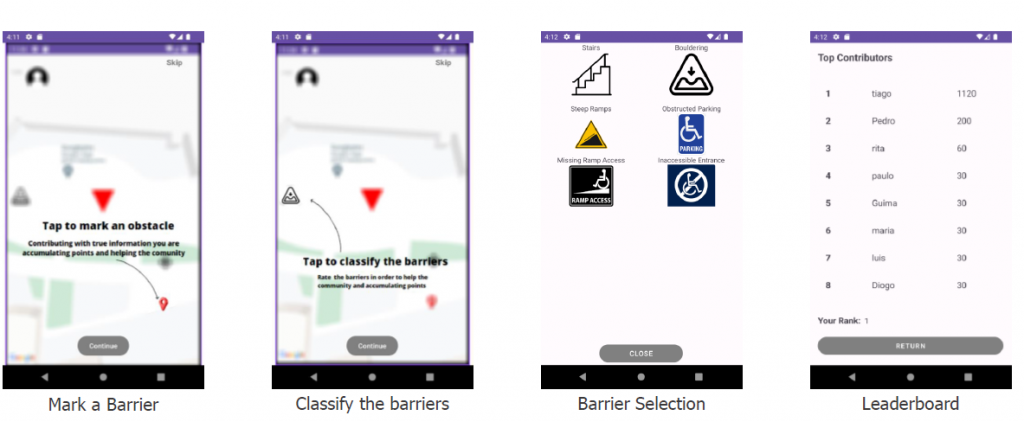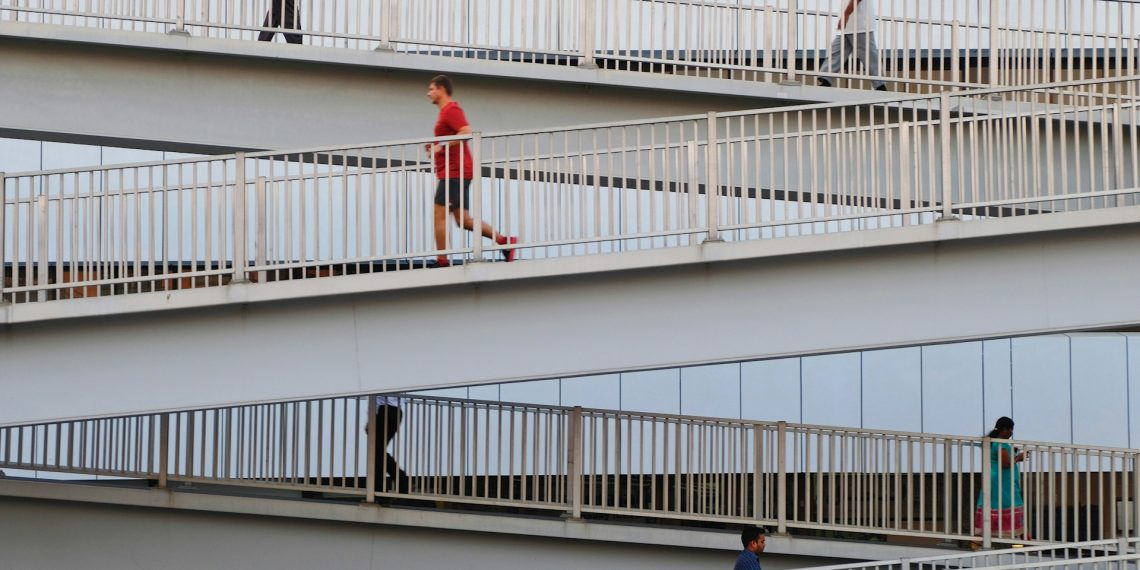INESC TEC researcher Marta Campos Ferreira participated in the development of a prototype that seeks to improve the experiences of people with reduced mobility in cities – and make them more inclusive. The new solution featured at an international conference, and the researcher’s work was acknowledged. Now, the goal is for the solution to reach everyone through an application.
Blocked sidewalks, steep ramps – or even inexistent – and cars that don’t respect parking spots. The city is not yet prepared for everyone; and those who need a wheelchair to move around know that there are accessible areas for most that are quite rough for people with reduced mobility. But it is possible to remove some of these barriers through technology and create more inclusive and accessible urban environments: the mobile application prototype BarrierBeGone aims to be a solution and help people navigate cities with real-time accessibility information – provided and updated by the users themselves.
Marta Campos Ferreira, researcher at INESC TEC and Professor at the Department of Industrial Engineering and Management at FEUP, presented this work at ICT4AWE24 – International Conference on Information and Communication Technologies for Ageing Well and e-Health, and received the Best Poster Award. Now, this solution aims to make its way to the smartphones we carry in our pockets whenever we leave home and reach more people. The prototype, tested for a week, encourages user participation through a scoring and rewards system, including a leaderboard that gamifies the experience.
Let us provide a practical example. A person using a wheelchair encounters a sidewalk blocked by cars on a street in Porto and is unable to continue his/her route: by reporting it on BarrierBeGone, the person not only helps others plan suitable routes – alerting decision-makers and nearby businesses to the need for intervention in the meantime – but also receive feedback from the community.
“People with mobility limitations appreciate being able to contribute and access, in real-time, valuable information about the existence of mobility barriers around them, allowing them to plan their routes more effectively and avoid obstacles that might hinder their accessibility, navigating the urban environment with more confidence and convenience“, said Marta Campos Ferreira.

Simple, fast, and consistent
The results of the evaluation are positive: the solution was tested with nine people (four wheelchair users), who highlighted the “simplicity, speed and consistency” of the solution: “The importance of the tool for the community was emphasized as a way to improve accessibility and promote social inclusion in cities”.
The researcher also mentioned that “the type of information available – obstacles to mobility identified in real time – is essential to promote citizens’ accessibility and social inclusion, but it can also complement other sources of static information already made available by municipalities, authorities and even by Google Maps”.
There are already some technological solutions that aim to make urban environments – increasingly digitally connected and data-driven – less hostile for those with reduced mobility. Marta Campos Ferreira pointed out two examples: Wheelmap – which allows you to find services, like restaurants, coffee-shops, shops, cinemas accessible to people in wheelchairs, and works based on ratings; and Ability App, which maps accessible locations for everyone.
But BarrierBeGone is different thanks to its “collaborative” nature. Marta Campos Ferreira explained that “the application works for urban public spaces where, in a collaborative way, users can identify obstacles to mobility, georeferencing them. Identified obstacles are then validated by other users, with people earning points as they get positive reviews”.
Thus, through a simple game and a scoreboard that measures positive contributions, it is possible to encourage participation “and foster a spirit of healthy competition and recognition among users”.
Marta Campos Ferreira’s research work focused on the design and development of tech-based services for smart, safe, sustainable, and inclusive cities – like BarriersBeGone. The goal is to continue with the project and improve the application, so that it reaches the community through the app stores.
The paper Improving Accessibility with Gamification Strategies: Development of a Prototype App, presented at the ICT4AWE24 conference, brought together the INESC TEC researcher, Tiago André Araújo (Faculty of Engineering of the University of Porto), Joana Campos and Carla Fernandes – from the Porto Nursing School.



 News, current topics, curiosities and so much more about INESC TEC and its community!
News, current topics, curiosities and so much more about INESC TEC and its community!